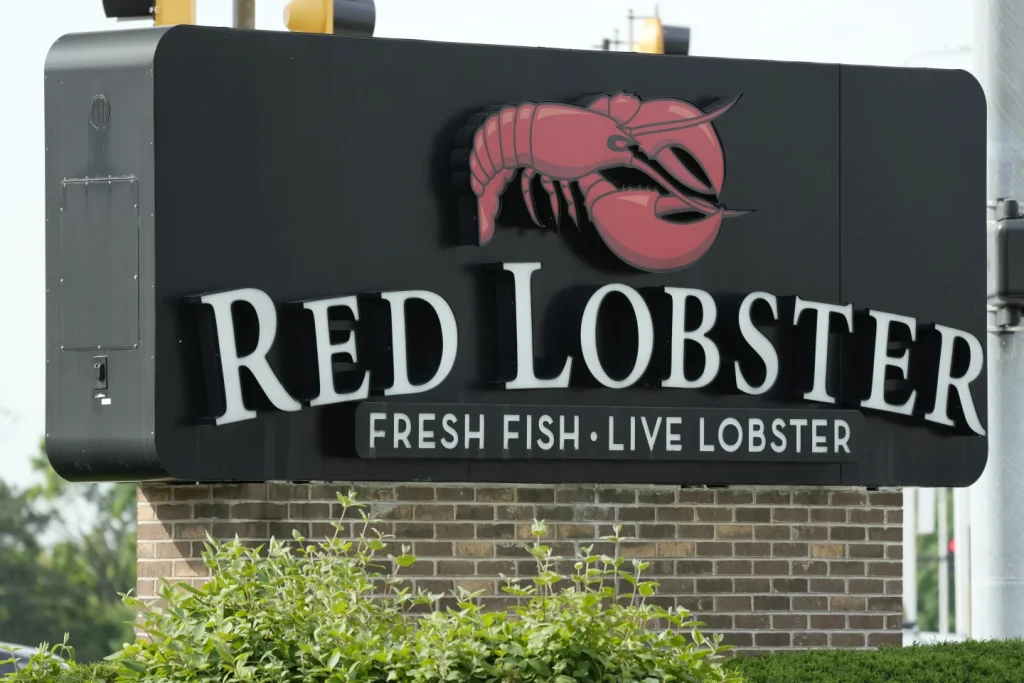Red Lobster, the renowned casual dining chain that has long been synonymous with bringing seafood to the masses, recently made headlines with its decision to file for Chapter 11 bankruptcy protection.
This move came on the heels of the closure of numerous restaurants, marking a significant development in the company’s 56-year history.
In a statement released following the filing, Red Lobster’s CEO, Jonathan Tibus, emphasized that the decision to restructure was seen as the most viable path forward for the company.
By addressing various financial and operational challenges head-on, Red Lobster aims not only to weather the current storm but also to emerge from this process as a stronger and more focused entity poised for growth.
Tibus, a seasoned corporate restructuring expert who assumed leadership of the chain in March, brings a wealth of experience to the table as Red Lobster navigates these challenging waters.
Despite the bankruptcy filing, Red Lobster has assured customers that its 600 restaurants will continue to operate during the proceedings.
The primary objectives of the restructuring include streamlining operations, rationalizing the restaurant footprint by closing certain locations, and ultimately facilitating a sale of the business.
As part of this strategic move, Red Lobster has entered into a “stalking horse” agreement, indicating its intention to sell the company to an entity established and controlled by its lenders.
Court documents reveal that Red Lobster currently operates 551 restaurants in the United States, along with 27 locations in Canada and 27 franchised establishments in Mexico, Japan, Ecuador, and Thailand.
With a combined workforce of approximately 36,000 employees across the U.S. and Canada, the chain’s financial restructuring is expected to have far-reaching implications for its stakeholders.
Industry experts, such as Aaron Allen, the founder of the esteemed restaurant consulting firm Aaron Allen & Associates, have weighed in on the factors leading to Red Lobster’s bankruptcy filing.
Allen attributes the chain’s struggles over the past two decades to intensifying competition from fast-casual and quick-service dining establishments like Chipotle and Panera. In a bid to stay competitive, Red Lobster occasionally resorted to price reductions, a strategy that often backfired.
Notably, the company faced significant losses in 2003 due to an ill-fated “Endless Crab” promotion when crab prices surged. Years later, a similar misstep occurred with the “Ultimate Endless Shrimp” promotion, underscoring a pattern of challenges in the company’s strategic decision-making.
The saga of Red Lobster serves as a compelling case study in the realm of corporate food service, shedding light on the complexities and pitfalls that can beset even well-established brands.
As the company embarks on this pivotal restructuring phase, the outcome remains uncertain, but one thing is clear – Red Lobster’s journey through Chapter 11 bankruptcy will be closely watched by industry observers and patrons alike.
The rise and fall of Red Lobster, once a beloved seafood chain synonymous with family dining and indulgent dishes, paints a vivid picture of the challenges faced by the restaurant industry in the ever-evolving landscape of consumer preferences and economic pressures.
The narrative of Red Lobster’s journey from a pioneering seafood restaurant founded by Bill Darden to its recent struggles and financial woes reflects a broader trend in the sector, where even established brands can find themselves grappling with changing market dynamics.
Red Lobster’s foray into the mid-2000s as an upscale dining destination marked a significant shift in its positioning, with efforts to elevate its image through price increases and store renovations.
However, despite these endeavors, the chain found itself grappling with a host of issues, including escalating lease and labor costs, as well as evolving consumer tastes that posed challenges to its traditional offerings.
The chain’s founder, Bill Darden, envisioned Red Lobster as a place where seafood could be enjoyed by families in a welcoming and inclusive environment.
His commitment to equality, demonstrated through his refusal to segregate patrons by race at his restaurants, showcased a progressive ethos that set Red Lobster apart in its early days.
Following its acquisition by General Mills in 1970, Red Lobster continued to grow under the umbrella of Darden Restaurants, expanding its menu offerings and garnering a loyal following for signature dishes like lobster linguini and the famous Cheddar Bay biscuits.
Despite its popularity, the chain struggled to attract younger customers and faced stiff competition in an increasingly crowded market.
The decision to sell Red Lobster to a private equity firm in 2014 marked a pivotal moment in the chain’s history, signaling a shift in ownership and strategic direction.
Subsequent investments from Thai Union Group aimed to revitalize the brand, but challenges persisted, culminating in significant losses from promotions like the ill-fated “Ultimate Endless Shrimp” deal.
As the COVID-19 pandemic and industry headwinds further strained Red Lobster’s financial performance, Thai Union Group announced its intention to divest its stake in the chain, citing prolonged negative contributions to its bottom line.

The recent closure of multiple Red Lobster locations and the impending auction of equipment underscore the extent of the challenges facing the once-thriving chain.
Looking ahead, industry experts predict a significant downsizing of Red Lobster’s restaurant footprint as part of the bankruptcy process, with potential buyers primarily interested in the chain’s real estate assets rather than its brand and operations.
The company’s complex financial situation, with a large number of creditors and estimated liabilities in the billions, highlights the magnitude of the task ahead for stakeholders involved in the restructuring process.
In conclusion, the story of Red Lobster serves as a cautionary tale for the restaurant industry, underscoring the importance of adaptability, innovation, and strategic foresight in navigating a competitive and unforgiving market environment.
As the chain grapples with its current challenges and seeks a path forward, the lessons learned from its rise and fall offer valuable insights for players in the ever-evolving landscape of dining and hospitality.
